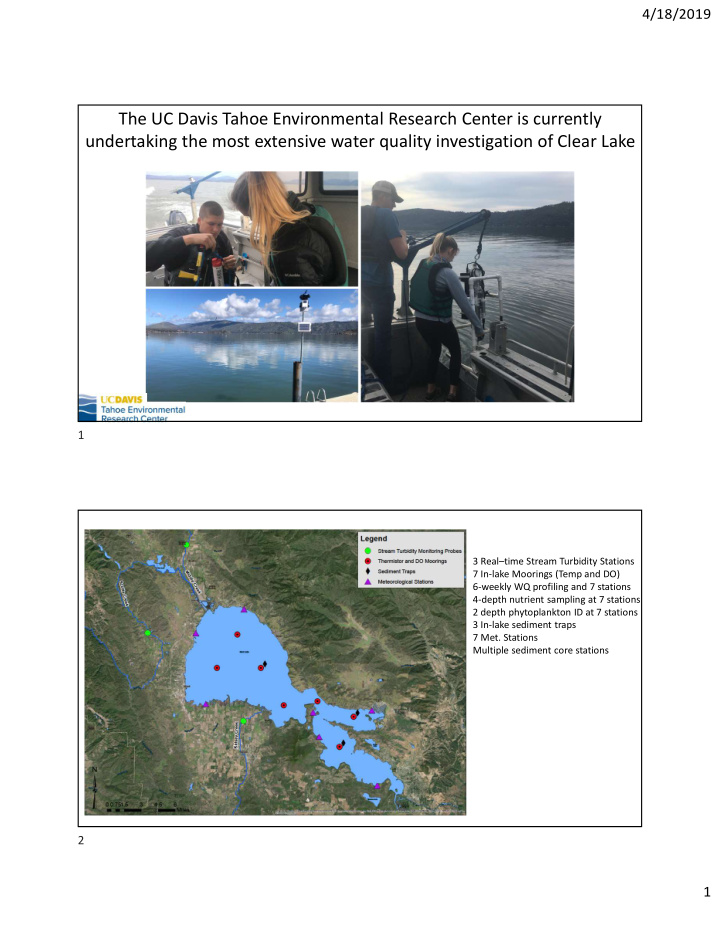



4/18/2019 The UC Davis Tahoe Environmental Research Center is currently undertaking the most extensive water quality investigation of Clear Lake 1 3 Real–time Stream Turbidity Stations 7 In-lake Moorings (Temp and DO) 6-weekly WQ profiling and 7 stations 4-depth nutrient sampling at 7 stations 2 depth phytoplankton ID at 7 stations 3 In-lake sediment traps 7 Met. Stations Multiple sediment core stations 2 1
4/18/2019 3 4 2
4/18/2019 5 Fundamental Question - What drives eutrophication and blue-green blooms? External loading of nutrients Internal loading of nutrients Intense, but changing temperature stratification 6 3
4/18/2019 1. Real-time stream turbidity measurement. Provides better estimates of stream nutrient and sediment fluxes. 2. Sediment N & P release rates (under aerobic and anaerobic conditions). Internal loading not considered in the TMDL, but it has the potential to be a major source. 3. Nutrient distributions in all 3 basins 4. Quantifying particulate nutrient flux with sediment traps. 5. Oxygen depletion rates and distribution of anoxic water to quantify internal nutrient release potential and timing. Implications for fish too 6. Future ADCP and AUV operations will quantify the spatial distribution of WQ components (oxygen, chlorophyll, phycocyanin, temperature, conductivity, turbidity). 7. Review of past data WQ data, plus review of existing cyanobacterial data collection 8. Remote sensing to quantify cyanobacterial distributions. 9. Watershed modeling 10. 3-D Lake modeling, calibrated with the data being collected, will allow for an understanding of the distribution of contaminants and the design of control measures for internal phosphorus, cyanobacterial blooms, and MeHg control in the future 7 Cyanobacteria Blooms 20 July 2018, Clear Lake Randy Turner (SF Estuary Institute) https://cchab.sfei.org/ Nicole Osorio, Scott Putty, Alyssa DiGirolamo, and Olivia Alexander (UCDavis) 8 4
Recommend
More recommend